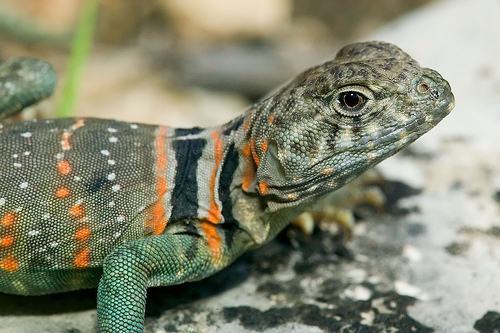Interactions
There is a species of collared lizard called Crotaphytus collaris that has members that specifically reside in Arkansas and Missouri (McAllister, 1985). In a study done of the food habits of these collared lizards, it was discovered that many had the empty shells of Millerelix peregrina in their stomachs (McAllister, 1985). These shells were thought to have been ingested accidentally during the lizard’s normal course of feeding (McAllister, 1985). This indicates that the lizards and Millerelix peregrina may occupy the same habitat, and that the snails can be found nearby the lizard's normal food sources (McAllister, 1985).
The study also pointed out that snail shells can be an important source of minerals in the environment (McAllister, 1985). As Jordan et. al points out, snail shells are very high in calcium (2012). Because of this, they play an important role in cycling calcium in their habitats, as well as in serving as calcium reservoirs (Jordan et al., 2012). Snails can also aid in decomposition of wastes, as well as assist in the soil formation process (Jordan et al., 2012). They are capable of excreting partially broken down plant matter in order to speed up nutrient cycling in their environments (Jordan et al., 2012). In general, snails can provide food and calcium for many different animals, including birds, amphibians, reptiles, and some small mammals and invertebrates (Jordan et al., 2012). Land snails are also food sources for animals like turtles, mice, squirrels, frogs, and salamanders (Burch, 1962).
Snails play an important role in our ecosystem. They indirectly affect
many species by maintaining environmental
conditions as well as by providing food for other organisms.

If you want to learn more interesting information about snails, go here!
back to Home Page
